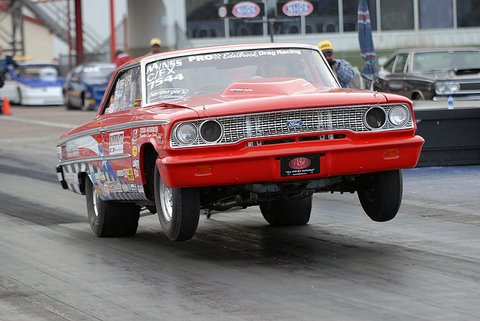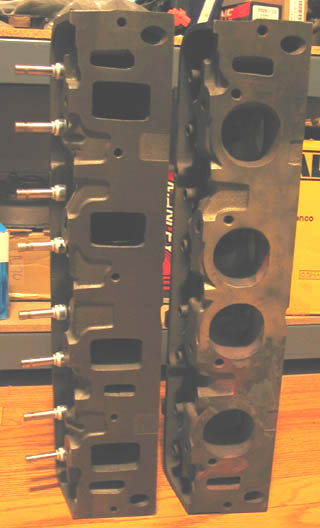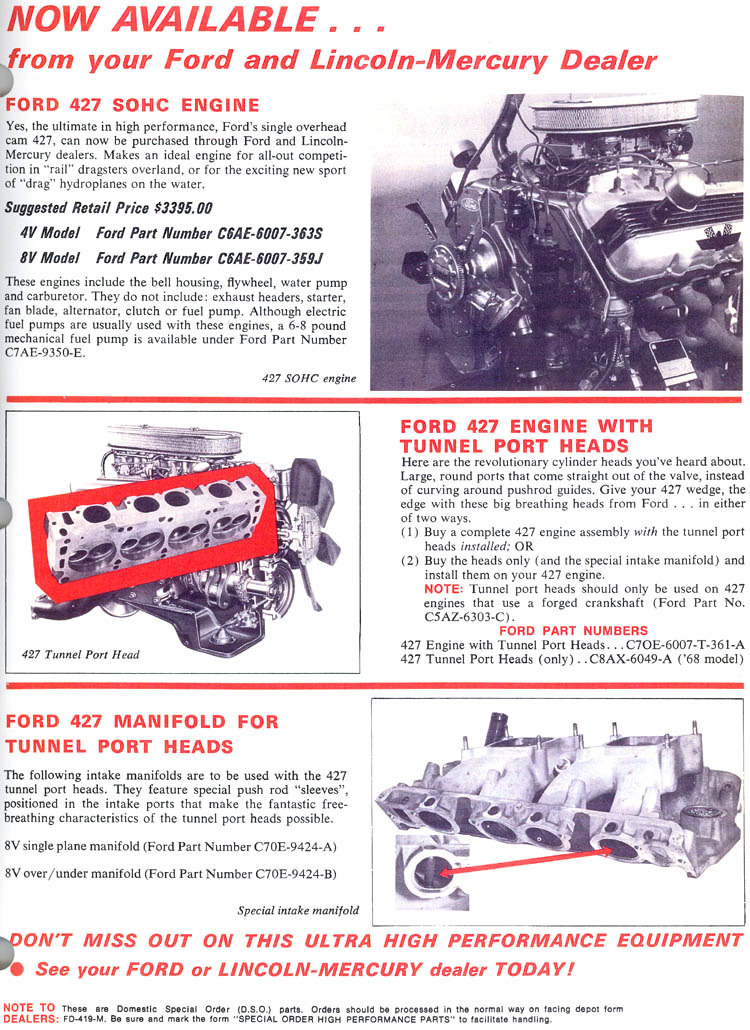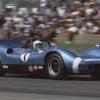Ford, Chevy and AMC did all use their own versions of the Borg-Warner T-10 transmission in the early years of sporty 4 speed vehicles.
AMC was always an amalgam of parts from the big 3.
Low-Medium-High Riser terms refer to intake and cylinder head development within the Ford 427 program. The 427 was Ford's primary performance engine from '63 - '68 and received a lot of development effort.
The '63 427s got a cylinder head that was only a little changed from the cylinder heads of the 390 and 406 of earlier years. It did get larger valves and a machined combustion chamber. This head and intake combo would later be termed "Low Riser" and it should be noted that it fit under the stock production hood of the Galaxie.
For '64 it was decided that to make more power for drag racing the intake charge needed a straighter shot and the "High Riser" head and intakes were designed. The ports on the High riser are much taller, the floor is in roughly the same position but the roof was raised about 1/2". The intake manifolds that coorespond to this new head were much taller as well raising the carburetor(s) several inches above the Low riser. It was impossible to fit this induction system under the hood of the Galaxie and Fairlane (Ford Built 100 '64 Fairlanes with 427 engines for drag racing called the Thunderbolt), so a tear drop shaped hood bubble with inlets in the back was fitted.

For '65 they took a more scientific approach and designed the "Medium Riser" head and intakes using a flow bench as part of the GT-40 program. Although the ports were shorter and a little wider than the "High Riser" they flowed better making an easy 525 HP in the GT-40. An interesting side benefit was that the "Medium Riser" setup fit under the hood of production cars.
All three styles of head require matching intake manifolds and Ford sold dual plane manifolds for each one with single or dual holley 4 barrel carburetors. The Medium Riser got a couple of other interesting intakes, one a single 4 barrel design with the carburetor offset slightly to one side to equalize runner lengths called the "Sidewinder", and the other a single plane dual 4 barrel intake with an air gap underneath the runners which is refered to as the "Tunnel Wedge" intake.
Simultaneously with all this the SOHC heads were being designed for the 427. This hemi head had large round intake ports because they weren't pinched by the push rod placement and a camshaft mounted on top. The cams were driven by a 6' long timing chain that ran off of a sub camshaft mounted in the normal location. This engine was outlawed by nascar but found dominance in drag racing for many years.
Then as mentioned above, in '67 the tunnel port heads and intakes were designed. The desire was to have the large round ports of the SOHC in a pushrod engine. To make this happen the push rods passed through tubes in the center of the intake port of the manifold.
The SOHC and the Tunnel port were never sold in a production car, you had to buy them over the counter at your Ford dealer. But the Medium Riser was used on all production cars that got the 427 through '68.
Chuck
























